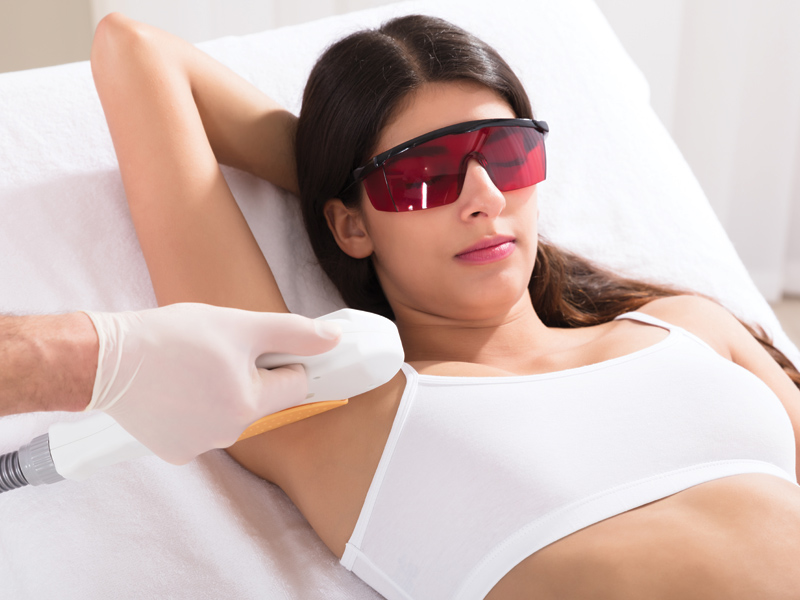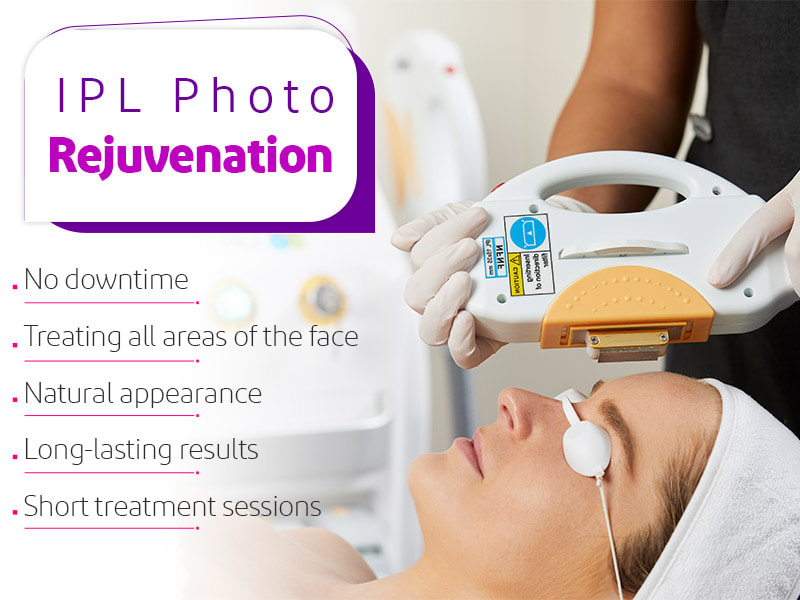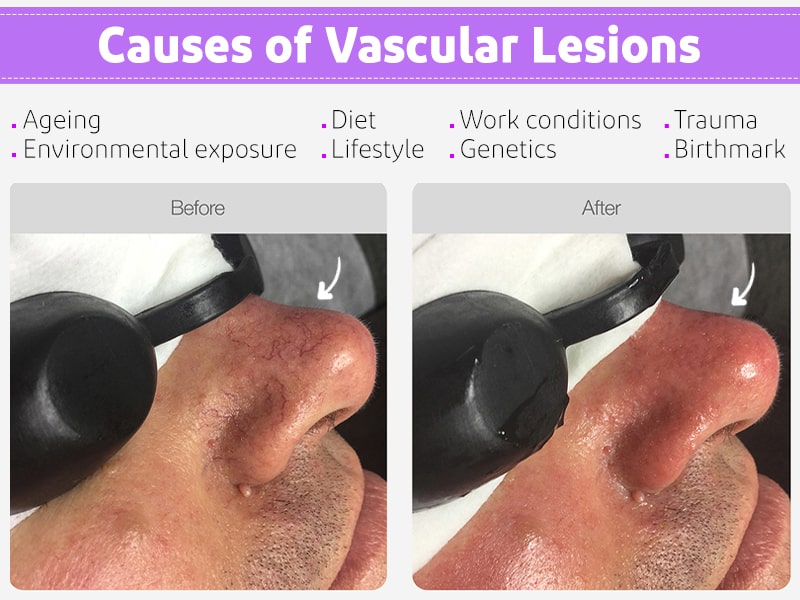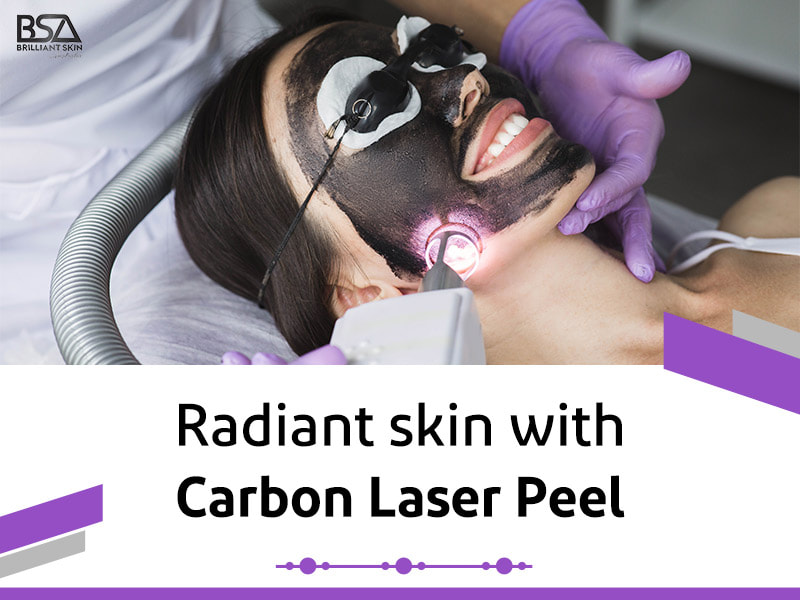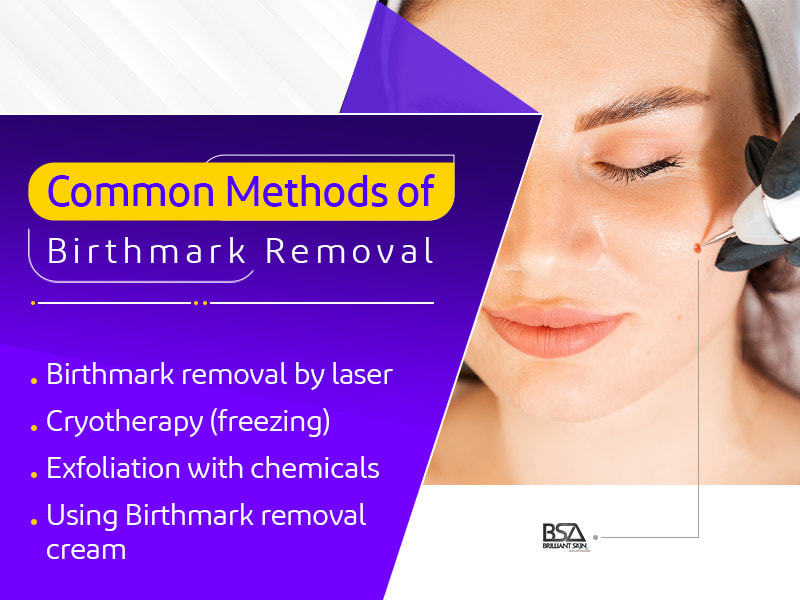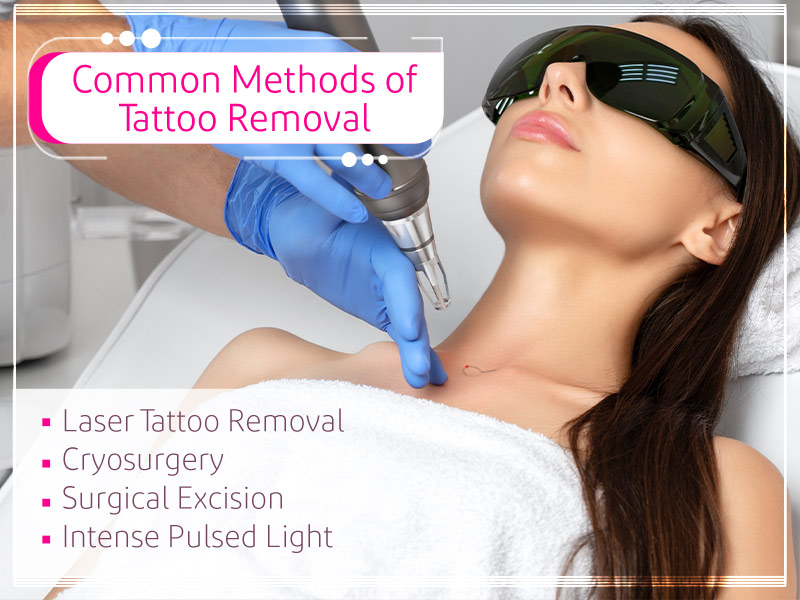The best treatment method to remove pigments
- Updated August 10, 2023
- by Honey Seida
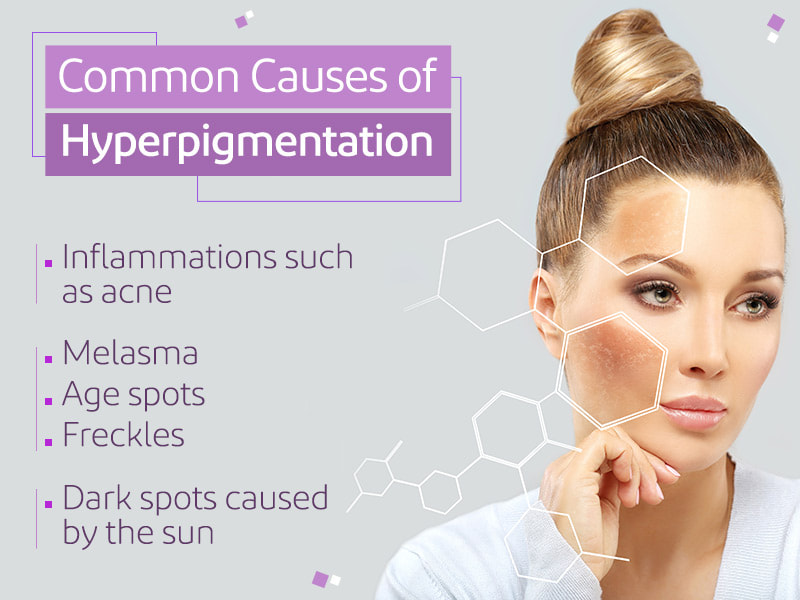
Hyperpigmentation as a very common skin condition may be caused by several factors, including sun damage, spots caused by pregnancy or disease, facial spots of genetic origin, etc. Sometimes, these dark spots will go away on their worn without the need for intervention but other times, a pigmentation removal treatment may be ideal.
In some cases, due to the harmlessness of most pigmentations, there is no medical need to remove them, but in terms of appearance, their presence may annoy the person. Here we will discuss the most common types of hyperpigmentation and introduce common ways of removing pigmentation.
Causes of Hyperpigmentation
Hyperpigmentation is caused by expanding the density and increasing the number of melanin pigments in different layers of the skin. The skin of these areas becomes darker or, in rare cases, lighter than other areas. These skin spots are quite common and usually harmless.
Hyperpigmentation can happen as a result of genetic factors or sun damage. These spots are small, flat spots that may be red, brown, tan, or black. There are different types of pigmentation. The most common types for which people seek pigmentation removal treatment include:
- Acne spots
- Melasma
- Age spots
- Freckles
- Spots caused by the sun
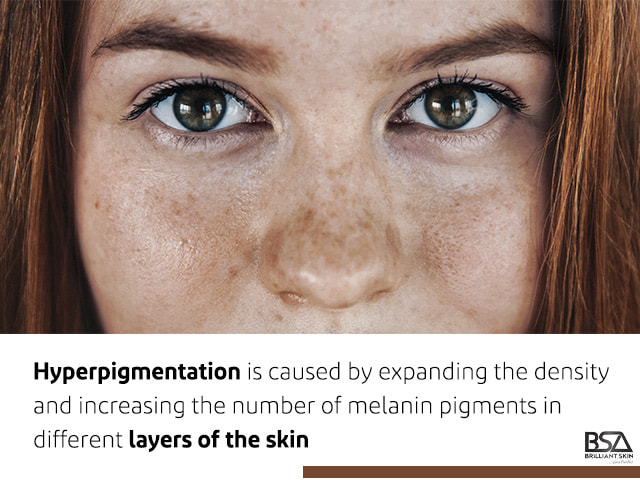
Pigmentation Removal Treatment
Today, there is a wide range of laser and non-laser treatments that can have very favourable effects in removing pigmentation. The most effective treatment in this context is pigmentation removal with laser.
While none of the following methods can be guaranteed in terms of permanent removal, the following methods are the best treatment options available for hyperpigmentation.
Pigmentation Removal with Laser
Laser therapy is considered a highly effective way to lighten dark spots on the skin. In this treatment method, black spots on the skin are targeted by concentrated light rays and the pigments are removed layer by layer.
A laser is a concentrated beam of light that targets a specific area or pigment and destroys the pigmented parts of the skin. There are different types of laser therapy, and this treatment method works faster than topical products with removing pigmentation. Laser therapy over time can stimulate collagen production, increase cell efficiency, and reduce the presence of black spots on the face.
Skin pigmentation removal cream
Skin exfoliation products do their job by removing dead cells or the outermost layer of the skin. Removing this layer leads to having healthier and clearer skin because the underlying skin layer will emerge. However, it should be kept in mind that very strong chemical drugs can burn the skin. The ingredients in these creams mostly include glycolic, salicylic, lactic acid, and trichloroacetic acid.
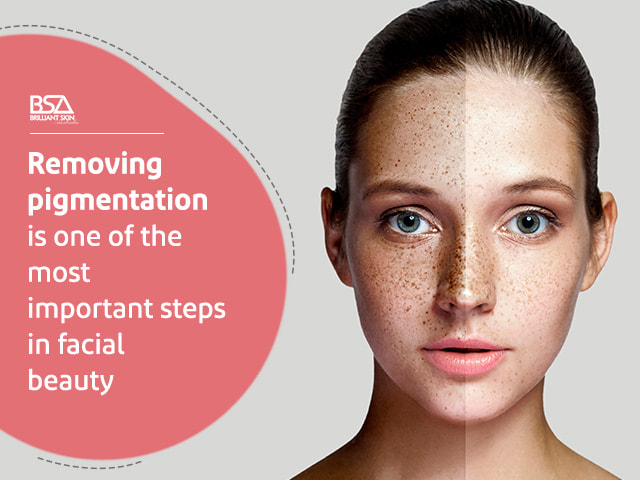
Microdermabrasion
Microdermabrasion is another well-known method of exfoliation used for pigmentation removal. Microdermabrasion removes dead skin using abrasion.
Microdermabrasion can be used as an alternative non-chemical and non-invasive method for removing pigmentation on face; it does not destroy the skin tissue and does not require a significant recovery period.
Since in microdermabrasion, the results of skin brightening improvement are more moderate compared to laser therapy, this method is suitable for milder spots.
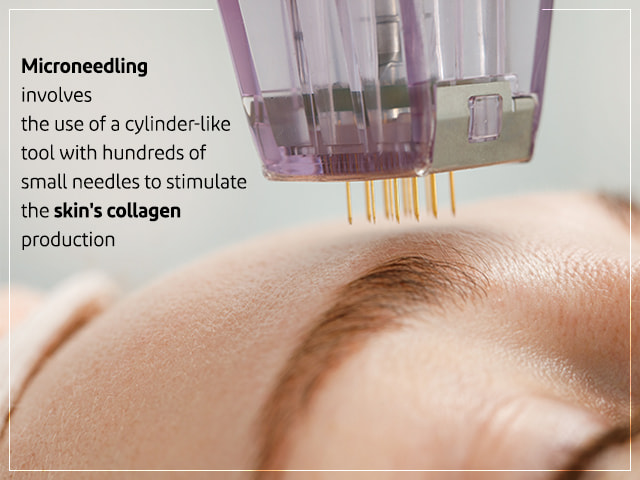
Microneedling
Microneedling involves the use of a cylinder-like tool with hundreds of small needles to stimulate the skin's collagen production and restore its elasticity by creating tiny pokes on the skin. While there are many home models of this device available, it is recommended that microneedling be done under the supervision of an experienced and certified therapist as it involves poking the skin with needles. Imagine what would happen if the needles penetrated the skin 2.5 mm instead of 0.5 mm.
Microneedling is usually combined with topical treatments to achieve the best results in removing dark spots on the face. When the skin barrier is broken, substances such as vitamin C can be added to brighten the skin.
Therapists may use platelet-rich plasma, a wound-healing serum, or a combination of hyaluronic acid and vitamin C to help with pigmentation removal for dark skin.
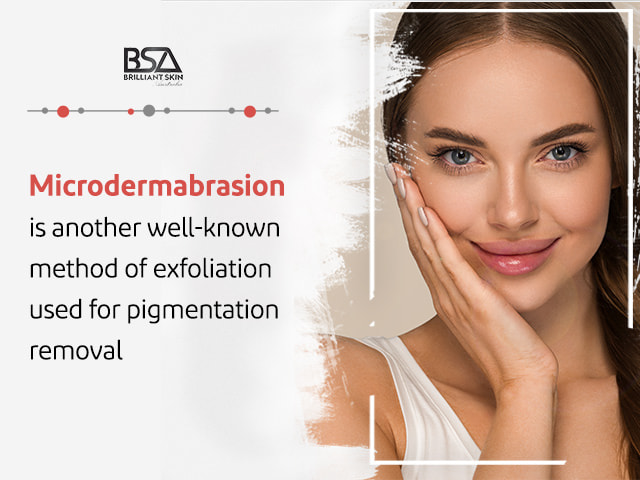
How does laser pigmentation removal work?
Laser has the ability to target pigmentation at different levels of the skin, thus addressing diverse types of problems. Laser therapy causes minimal damage to the skin, re-stimulates the skin, and removes surface damage, skin imperfections, and excess skin pigments.
Immediately after the treatment and a few hours later, you will see that the spots become darker. Over the next few days, they spread on the surface of the skin and you may naturally start shedding dead skin cells.
In some cases, these spots do not disappear completely, but only become brighter. After the first and second treatments, the patient notices a rapid recovery, and a more gradual recovery is when the pigmentations become brighter day by day.
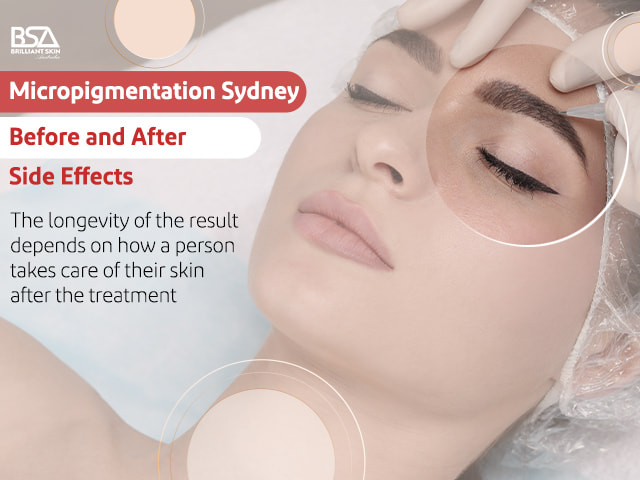
It is recommended to have 4-5 sessions of treatment to achieve the desired result. There need to be intervals of 3 to 4 weeks between each treatment session though. Perform the treatment at least once a year whenever the facial and skin pigmentations reappear.
The longevity of the result depends on how a person takes care of their skin after the treatment. Removing pigmentation with laser is similar to teeth whitening. When a person whitens their teeth, the colour becomes white, but over time, the effects of coffee, cigarettes, alcohol, or other foods will cause stains to be formed again, and teeth whitening may become necessary again.
In the same way, the treatment of facial spots with laser removes the spots caused by the sun. But most people are exposed to the sun in some way and the hyperpigmentation may come back and require treatment again.
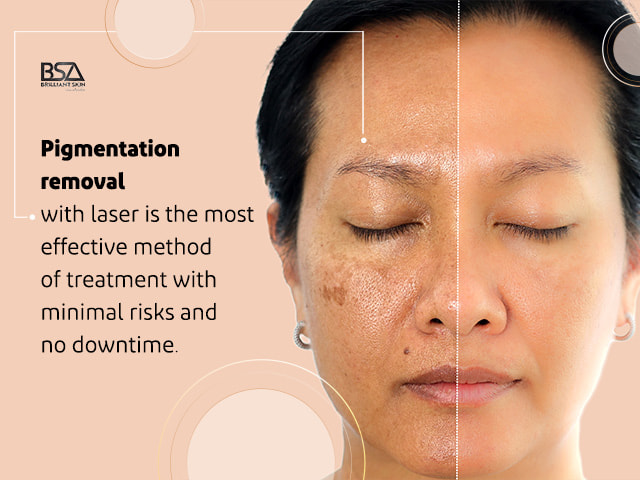
Pigmentation removal before and after
Paying attention to pigmentation removal before and after recommendations and tips will help you to have better results from your skin pigmentation removal procedure.
Before Removing Pigmentating
- At least for 1 month or 4 weeks before the treatment session, avoid sunbathing, or using tanning devices.
- Avoid the sun as much as possible.
- Discontinue taking Retin-A or any medicine containing retinol at least one week before the treatment session.
- One week before the treatment session, avoid using exfoliating substances and compounds containing HA or hydroxy acid and glycolic acid.
- After Botox injection, wait at least 2 weeks between the injection and laser treatment.
- Smoking reduces the natural healing ability of the skin, so smokers should stop smoking for 2 weeks before and after pigmentation removal with laser.
- On the day of laser treatment, the treated area should be clean without any cosmetics, creams, perfumes, or lotions. Use only sunscreen and remove it before laser treatment.
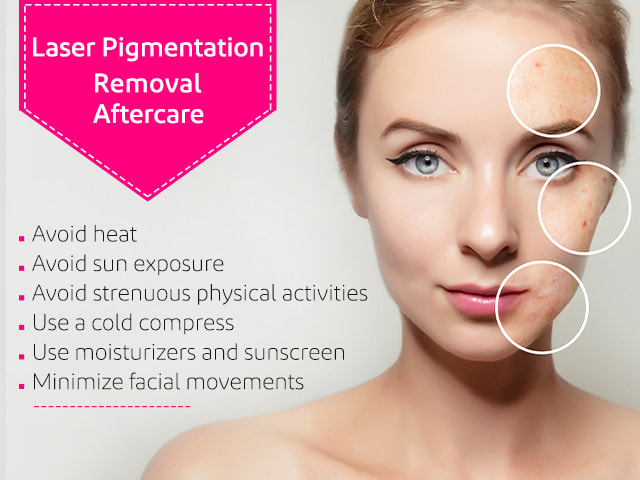
Pigmentation Removal Aftercare
- Avoid heat
- Avoid sun exposure
- Avoid strenuous physical activities
- Use a cold compress
- Use moisturizers and sunscreen
- Minimize facial movements
Pigmentation Removal with Laser Side Effects
There can be side effects associated with laser pigmentation removal. These may include temporary redness, swelling, itching, and discomfort immediately after the procedure. There is also a risk of hyperpigmentation or hypopigmentation, skin sensitivity to sunlight, and in rare cases, scarring or infection. It is important to consult with a qualified professional and follow proper aftercare instructions to minimize these potential side effects.
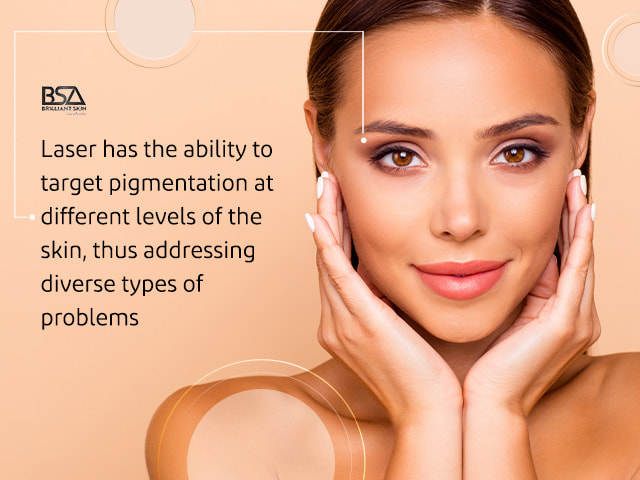
FAQs
Can pigmentation be removed?
Yes, there are a variety of ways available for pigmentation removal.
Is laser pigmentation removal safe?
Yes, pigmentation removal with laser is considered a very safe procedure if performed in a reputable clinic under the supervision of a trained, certified therapist.
Does laser treatment remove pigmentation?
Yes, laser treatment is considered the safest and most effective method to remove pigmentation with o downtime.
Is it possible to remove pigmentation permanently?
Yes, remove pigmentation permanently is possible provided that skin care routine is followed.
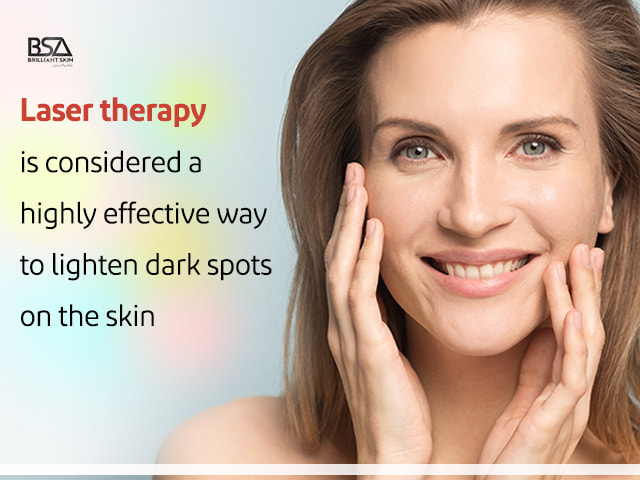
Final Word
Removing pigmentation is one of the most important steps in facial beauty. Dark spots (hyperpigmentation) appear on the skin when it produces more than the normal amount of melanin.
Eyes, skin, and hair get their colour from melanin. Dark spots on the skin may not require treatment and their appearance is most of the time nothing to worry about. However, some people prefer to have them removed for cosmetic reasons. Pigmentation removal with laser is the most effective way to do just that with minimal risks and no downtime.

